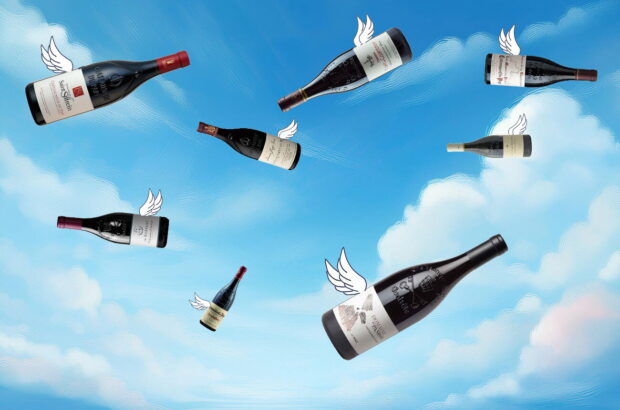The Wandering Palate finds a major development for wine consumers
Penfolds chief winemaker Peter Gago (left), using Winesave at a Penfolds Red Wine Clinic in Canada
Through 6,500 years of winemaking, keeping opened wine from deteriorating has been a problem. Ironically the solution was always right under our noses, in the form of an inert gas called argon.
Although restaurants and bars have installed expensive argon dispensers to save wine, there has been no way to do it at home. Finally an innovative Australian company called Winesave has come up with a way to dispense food-grade jolts of the gas in an effective and affordable canister.
Wine’s main enemy has always been exposure to oxygen and subsequently spoilage, which winemakers have fought since the ancient Romans’ discovery of sulphur dioxide as a crucial anti-oxidant.
Even the once indispensable cork is now superseded if not obsolete with the fast-growing acceptance of the screwtop. And as the very nature of wine is less intimidating today, and with growing familiarity amongst the populace, a glass of wine is increasingly becoming a part of everyday life around the world.
As any wine marketer will acknowledge, wine consumers are at their most inquisitive and adventurous in a restaurant environment or wine bar and willing to try something new, most likely served by the glass. Indeed, serving wine by the glass or even tasting portions is universally transforming wine service and consumption patterns, giving the consumer a greater choice of wines to discover and promoting the pairing of wines to specific dishes and enhancing the homogeneous synergies of enjoying wine with food.
Imagine if you could take this same approach at home and depending on your mood or what you were eating, you could choose from a range of wines by the glass. Or even the very notion that you could open a bottle wine at any time and not feel compelled to drink it all.
Some restaurants, wine bars and hotels use costly and complex commercial wine preservation systems such as the high-tech Enomatic which injects the inert gas argon, which being colorless, odorless and flavorless, protects the wine’s essential qualities for more than three weeks.
But many restaurants and wine bars (let alone the home consumer) struggle to justify the expense of installing commercial preservation systems, and in reality is there is a lot of poorly kept, substandard wine being served by the glass. However, Winesave has now managed to contain and dispense argon from a very inexpensive canister.
Argon‘s most exceptional quality is it combines with nothing — an atom that is totally resistant to bonding with other elements. Being two and half times heavier than air, it simply falls down, displacing the oxygen in the bottle and forming a barrier between the wine and air.
A one-second squirt of Winesave inside the opened bottle of wine, with the bottle kept upright and relatively cool, will preserve wine for weeks, indeed months.
I have tested Winesave for several months on a wide range of grape varieties, styles and bottle age; from young and relatively fragile aromatic white wines to completely mature vintages of red wines, even a 1977 vintage port. Not one wine showed any sign of deterioration. Even after opening and resealing several times, all kept perfectly for more than two months, with some improved.
Over the years a multitude of devices to preserve wine has appeared, all with limited success. The most commercially popular has been a pump that attempts to induce a ‘vacuum’ by extracting air from the wine bottle. The industry consensus, however, is that hand pump-operated systems do not accurately measure the vacuum pressure and in any case are detrimental to wine by stripping it of desirable aroma and flavour.
Appreciating that there is palpable consumer disconnect with wine technology – the simplicity, affordability, the natural qualities of argon and Winesave technology are hard to ignore, and is a major development that should be a boon for wine consumption at home, and anywhere wine is served – by the glass.
Winesave suggests a canister has 50 applications, which I found to be a conservative estimate – I managed another 30 or so myself. A canister retails for AUS$28 in Australia, SIN$35 in Singapore and £19.95 in the UK.
Curtis Marsh is an independent Asia-based wine and food writer. His commentaries are published in www.thewanderingpalate.com
This is an edited version of his original article which appeared at www.asiasentinel.com
Marsh’s theorem: ‘Life is filling in time between meals… and a meal without wine could only be breakfast.’
Written by Curtis Marsh







